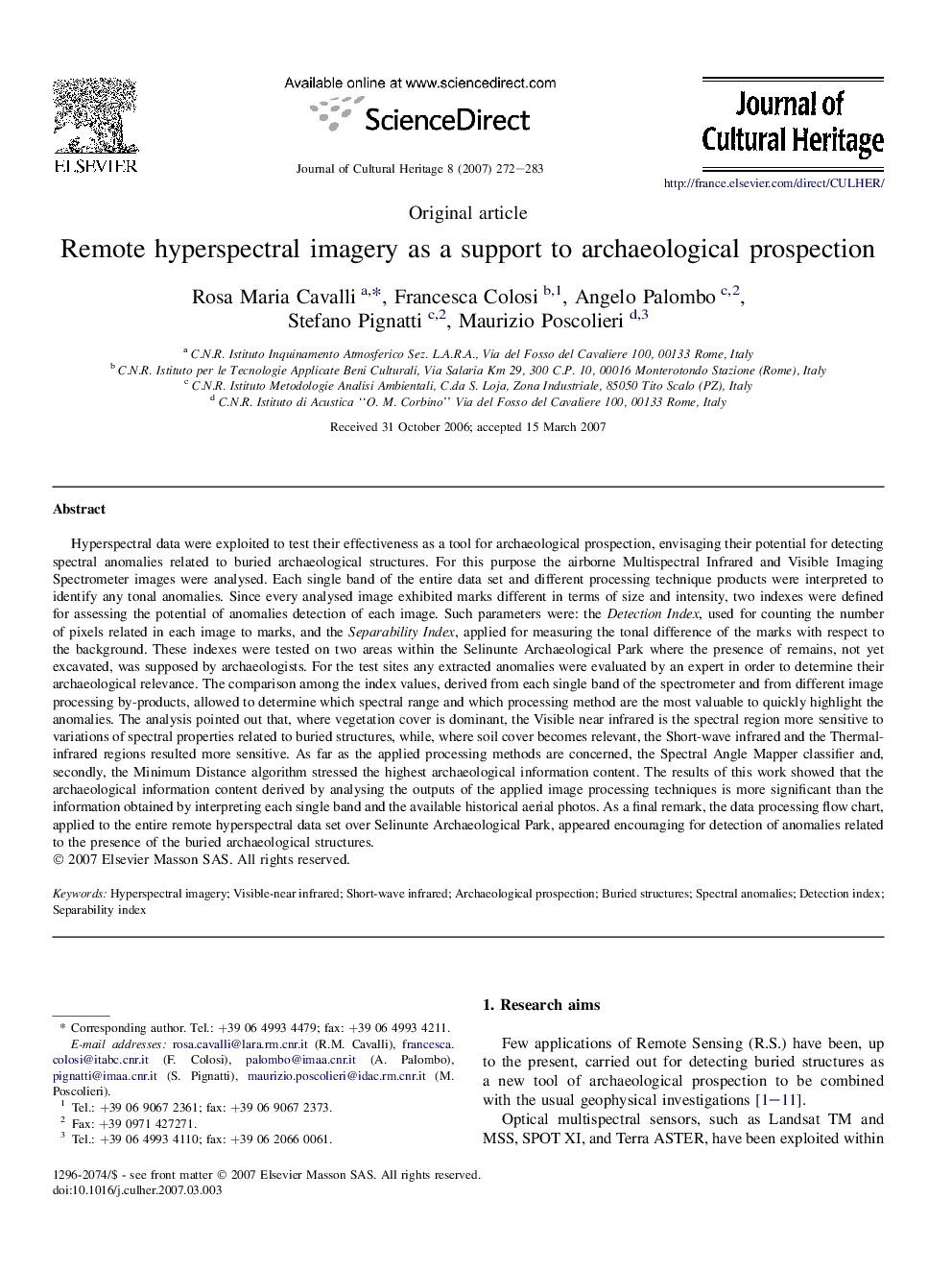| Article ID | Journal | Published Year | Pages | File Type |
|---|---|---|---|---|
| 1038718 | Journal of Cultural Heritage | 2007 | 12 Pages |
Hyperspectral data were exploited to test their effectiveness as a tool for archaeological prospection, envisaging their potential for detecting spectral anomalies related to buried archaeological structures. For this purpose the airborne Multispectral Infrared and Visible Imaging Spectrometer images were analysed. Each single band of the entire data set and different processing technique products were interpreted to identify any tonal anomalies. Since every analysed image exhibited marks different in terms of size and intensity, two indexes were defined for assessing the potential of anomalies detection of each image. Such parameters were: the Detection Index, used for counting the number of pixels related in each image to marks, and the Separability Index, applied for measuring the tonal difference of the marks with respect to the background. These indexes were tested on two areas within the Selinunte Archaeological Park where the presence of remains, not yet excavated, was supposed by archaeologists. For the test sites any extracted anomalies were evaluated by an expert in order to determine their archaeological relevance. The comparison among the index values, derived from each single band of the spectrometer and from different image processing by-products, allowed to determine which spectral range and which processing method are the most valuable to quickly highlight the anomalies. The analysis pointed out that, where vegetation cover is dominant, the Visible near infrared is the spectral region more sensitive to variations of spectral properties related to buried structures, while, where soil cover becomes relevant, the Short-wave infrared and the Thermal-infrared regions resulted more sensitive. As far as the applied processing methods are concerned, the Spectral Angle Mapper classifier and, secondly, the Minimum Distance algorithm stressed the highest archaeological information content. The results of this work showed that the archaeological information content derived by analysing the outputs of the applied image processing techniques is more significant than the information obtained by interpreting each single band and the available historical aerial photos. As a final remark, the data processing flow chart, applied to the entire remote hyperspectral data set over Selinunte Archaeological Park, appeared encouraging for detection of anomalies related to the presence of the buried archaeological structures.
